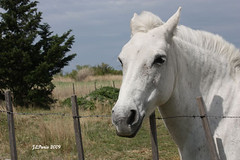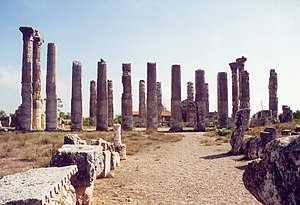 Image via Wikipedia
Image via WikipediaI wish we had scratch-and-sniff for this. I'm crossing a flora post with style today to write about
perfume.
Many of us know parfum is famously made in France. Lots of people have been to Eze or Grasse to visit the factories. The oils perfume makers use there come from all over the world.
We'll start with roses, because I like the picture.
Rosa Damascena, known as the Damask Rose, is the best rose for pefume. If you guessed it comes from
Syria, you're right. (Notice lots of interesting things come from there, like the post about
swords and the one about
inlaid woodwork.) Syria is right next door to Turkey, so of course the rose made it's way across the border, wherever that was at the time. Then in 1420, the rose travelled via a Turkish judge's love for botany to
Bulgaria, where it became locally known as the Kazanlak rose.
Much like with wine, coffee or tea,
terroir makes a difference to the scent of the rose oils. Turkey and Bulgaria come out at the top in that category, though rose oils are made in other regions of the world.
Making the rose oil known as Rose Otto or
Attar of Roses is a very labor intensive process. Petals are gathered by hand, then steam distilled. It takes 4,000 kilos of rose petals to make 1 kilo of perfume oil. After the oil is extracted, the remaining
rose water is sold for use in the kitchen (not my favorite flavor).
You can find Turkish rose parfum at the Mısır Çarşı in Istanbul, as well as at other bazaars and shops around Turkey. Buyer beware, the oil is sometimes altered with rose geranium to make it more affordable. If that's what you want, that's fine. Just be careful you aren't buying the wrong stuff for the real price. If you smell the two side by side, you should notice a difference.
Sandalwood is an unmistakeably oriental scent I can't do without, especially when its combined with rose. I once bought a vial of Sandal Rose from arabian perfumer
Ajmal Al Otooor when I lived in Abu Dhabi. It was my absolute favorite. Unfortunately, I can't find a US source. Part of the reason may be because oil of the Sandal tree is so precious, it costs between $1000 - $1500 per kilo.
High demand and low supply are a result of harsh harvesting practices. The entire tree is torn up out of the ground, root and all, to get every bit of wood for oil. Over the centuries they were never replanted so the sandal trees are a now protected species. In India and Nepal, the trees are government owned and harvesting is prohibited without a permit. Australia may save the day for the sandalwood tree, since its being grown successfully in plantations there.
I've come up with some substitutes for the Sandal Rose blend I found in the Emirates. They aren't exactly the same, but they evoke a similar exotic feeling. Most of these scents are very long lasting and one spray is often enough to last the whole day (or longer for Hermes).
Ferre Rose from
Gianfranco Ferre - sandalwood, rose & fruit
Jardin Mediterraneé from
Hermes - no rose, but notes of cedar and fig
Magnifique from
Lancôme - uses nagarmotâ instead of sandalwood. Perfect for the evening.
Fun facts:
Besides its use in perfume, the lovely smooth sandalwood is also carved into decorative objects and furniture. The scent can last for decades.
In Zoroastrianism, worshipers offer sweet sandalwood smoke to
Ahura Mazda (not a car) in the fires of the temple. Remember this, it will come up again later.
The name of my book,
Burnt Amber, was partly inspired by fragrance.
 Image via Wikipedia
Image via Wikipedia










































